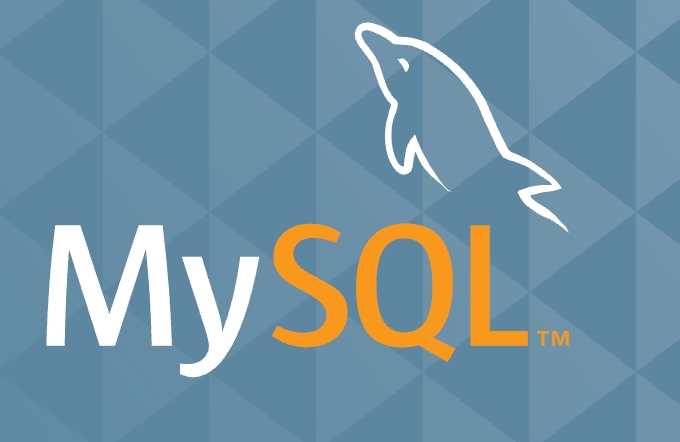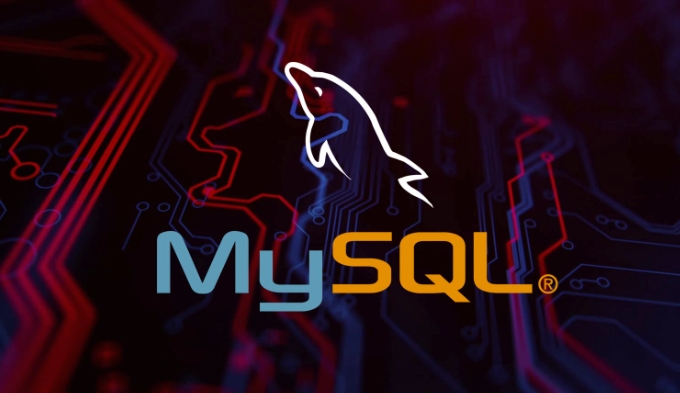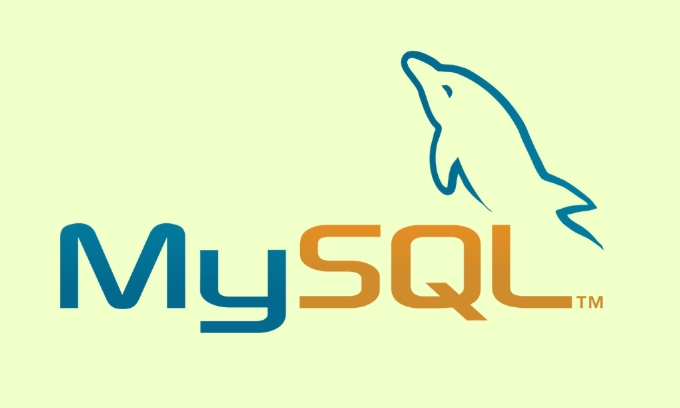Integrating MySQL with Apache Kafka for Real-time Data Streams
Integrating MySQL and Apache Kafka can realize real-time data change push. The common solutions are as follows: 1. Use Debezium to capture database changes, encapsulate data changes into Kafka messages by reading MySQL binlog. The process includes enabling binlog, installing Kafka Connect and Debezium plug-ins, configuring connectors and starting; 2. Pushing changes to Kafka through MySQL triggers, but there are shortcomings such as poor performance, no retry mechanism, and complex maintenance, which are only suitable for simple scenarios; 3. Use data synchronization services provided by cloud manufacturers such as Alibaba Cloud DTS, AWS DMS, etc., which have the advantages of maintenance-free, graphical configuration, and support for breakpoint continuous transmission, but it requires a certain cost. Among them, Debezium is the most cost-effective solution and suitable for most small and medium-sized teams.

The integration of MySQL and Apache Kafka is becoming increasingly common in modern real-time data architectures. Simply put, this combination allows you to push data changes in MySQL out in real time for consumption and processing by other systems. For example, when the order status is updated, downstream services can receive notifications immediately and respond.

The key to achieving this is how to capture data changes in MySQL and transfer them to Kafka in an efficient and reliable manner. Here are some common practices and suggestions.
Use Debezium to capture database changes
Debezium is an open source tool based on Kafka Connect, specially used to capture database structure changes and data changes (that is, CDC, Change Data Capture). It supports MySQL, PostgreSQL and other databases.

- It gets data changes by reading MySQL's binlog
- Change events will be encapsulated as Kafka messages and sent to the specified topic
- The configuration is relatively simple, the community is active, and the documentation is complete
The basic process of using Debezium is as follows:
- Enable MySQL binlog and set to ROW mode
- Install and configure Kafka Connect and Debezium plug-ins
- Create a connector configuration file, specifying database connection information and tables to listen to
- Start Kafka Connect and load the connector
After this step is completed, you can see the corresponding message topics of each table, which contain detailed records of insertion, update and deletion operations.

Trigger scheme that directly writes to Kafka (use with caution)
Some teams will consider using Triggers in MySQL to capture changes and push changes to Kafka through external programs. This method sounds straightforward, but it has some obvious disadvantages in actual use:
- Trigger performance overhead is high, especially in high concurrency scenarios
- There is no retry mechanism for processing failure, and data is easily lost
- Complex maintenance and difficult debugging
So unless your business scenario is very simple and the data volume is not large, this method is not recommended.
If you really want to try it, the general approach is:
- Create an AFTER INSERT/UPDATE/DELETE trigger on a MySQL table
- The trigger calls UDF or calls an external script (for example, via HTTP request)
- The script is responsible for sending the changes to Kafka
But again, this is just "can do it", not "recommended to do it".
Data synchronization service is also an option
In addition to building open source solutions like Debezium by yourself, you can also consider data synchronization services provided by some cloud manufacturers. For example, Alibaba Cloud DTS, AWS DMS, Google Cloud Datastream, etc., they all support real-time synchronization from MySQL to Kafka or through Kafka in the middle.
The advantages of these services are:
- No need to maintain complex components yourself (such as Kafka Connect, ZooKeeper, etc.)
- Provides graphical interface configuration, and monitoring is more convenient
- Support enterprise-level functions such as breakpoint continuous transmission and error retry
Of course, the cost is that it may be higher, or rely on a specific platform.
Basically these are the ways. You can choose the right plan based on your operation and maintenance capabilities, data size and budget. Among them, Debezium is the most cost-effective one and is suitable for most small and medium-sized teams to try.
The above is the detailed content of Integrating MySQL with Apache Kafka for Real-time Data Streams. For more information, please follow other related articles on the PHP Chinese website!

Hot AI Tools

Undress AI Tool
Undress images for free

Undresser.AI Undress
AI-powered app for creating realistic nude photos

AI Clothes Remover
Online AI tool for removing clothes from photos.

Clothoff.io
AI clothes remover

Video Face Swap
Swap faces in any video effortlessly with our completely free AI face swap tool!

Hot Article

Hot Tools

Notepad++7.3.1
Easy-to-use and free code editor

SublimeText3 Chinese version
Chinese version, very easy to use

Zend Studio 13.0.1
Powerful PHP integrated development environment

Dreamweaver CS6
Visual web development tools

SublimeText3 Mac version
God-level code editing software (SublimeText3)

Hot Topics
 Performing logical backups using mysqldump in MySQL
Jul 06, 2025 am 02:55 AM
Performing logical backups using mysqldump in MySQL
Jul 06, 2025 am 02:55 AM
mysqldump is a common tool for performing logical backups of MySQL databases. It generates SQL files containing CREATE and INSERT statements to rebuild the database. 1. It does not back up the original file, but converts the database structure and content into portable SQL commands; 2. It is suitable for small databases or selective recovery, and is not suitable for fast recovery of TB-level data; 3. Common options include --single-transaction, --databases, --all-databases, --routines, etc.; 4. Use mysql command to import during recovery, and can turn off foreign key checks to improve speed; 5. It is recommended to test backup regularly, use compression, and automatic adjustment.
 Implementing Transactions and Understanding ACID Properties in MySQL
Jul 08, 2025 am 02:50 AM
Implementing Transactions and Understanding ACID Properties in MySQL
Jul 08, 2025 am 02:50 AM
MySQL supports transaction processing, and uses the InnoDB storage engine to ensure data consistency and integrity. 1. Transactions are a set of SQL operations, either all succeed or all fail to roll back; 2. ACID attributes include atomicity, consistency, isolation and persistence; 3. The statements that manually control transactions are STARTTRANSACTION, COMMIT and ROLLBACK; 4. The four isolation levels include read not committed, read submitted, repeatable read and serialization; 5. Use transactions correctly to avoid long-term operation, turn off automatic commits, and reasonably handle locks and exceptions. Through these mechanisms, MySQL can achieve high reliability and concurrent control.
 Handling character sets and collations issues in MySQL
Jul 08, 2025 am 02:51 AM
Handling character sets and collations issues in MySQL
Jul 08, 2025 am 02:51 AM
Character set and sorting rules issues are common when cross-platform migration or multi-person development, resulting in garbled code or inconsistent query. There are three core solutions: First, check and unify the character set of database, table, and fields to utf8mb4, view through SHOWCREATEDATABASE/TABLE, and modify it with ALTER statement; second, specify the utf8mb4 character set when the client connects, and set it in connection parameters or execute SETNAMES; third, select the sorting rules reasonably, and recommend using utf8mb4_unicode_ci to ensure the accuracy of comparison and sorting, and specify or modify it through ALTER when building the library and table.
 Connecting to MySQL Database Using the Command Line Client
Jul 07, 2025 am 01:50 AM
Connecting to MySQL Database Using the Command Line Client
Jul 07, 2025 am 01:50 AM
The most direct way to connect to MySQL database is to use the command line client. First enter the mysql-u username -p and enter the password correctly to enter the interactive interface; if you connect to the remote database, you need to add the -h parameter to specify the host address. Secondly, you can directly switch to a specific database or execute SQL files when logging in, such as mysql-u username-p database name or mysql-u username-p database name
 Managing Character Sets and Collations in MySQL
Jul 07, 2025 am 01:41 AM
Managing Character Sets and Collations in MySQL
Jul 07, 2025 am 01:41 AM
The setting of character sets and collation rules in MySQL is crucial, affecting data storage, query efficiency and consistency. First, the character set determines the storable character range, such as utf8mb4 supports Chinese and emojis; the sorting rules control the character comparison method, such as utf8mb4_unicode_ci is case-sensitive, and utf8mb4_bin is binary comparison. Secondly, the character set can be set at multiple levels of server, database, table, and column. It is recommended to use utf8mb4 and utf8mb4_unicode_ci in a unified manner to avoid conflicts. Furthermore, the garbled code problem is often caused by inconsistent character sets of connections, storage or program terminals, and needs to be checked layer by layer and set uniformly. In addition, character sets should be specified when exporting and importing to prevent conversion errors
 Designing a Robust MySQL Database Backup Strategy
Jul 08, 2025 am 02:45 AM
Designing a Robust MySQL Database Backup Strategy
Jul 08, 2025 am 02:45 AM
To design a reliable MySQL backup solution, 1. First, clarify RTO and RPO indicators, and determine the backup frequency and method based on the acceptable downtime and data loss range of the business; 2. Adopt a hybrid backup strategy, combining logical backup (such as mysqldump), physical backup (such as PerconaXtraBackup) and binary log (binlog), to achieve rapid recovery and minimum data loss; 3. Test the recovery process regularly to ensure the effectiveness of the backup and be familiar with the recovery operations; 4. Pay attention to storage security, including off-site storage, encryption protection, version retention policy and backup task monitoring.
 Using Common Table Expressions (CTEs) in MySQL 8
Jul 12, 2025 am 02:23 AM
Using Common Table Expressions (CTEs) in MySQL 8
Jul 12, 2025 am 02:23 AM
CTEs are a feature introduced by MySQL8.0 to improve the readability and maintenance of complex queries. 1. CTE is a temporary result set, which is only valid in the current query, has a clear structure, and supports duplicate references; 2. Compared with subqueries, CTE is more readable, reusable and supports recursion; 3. Recursive CTE can process hierarchical data, such as organizational structure, which needs to include initial query and recursion parts; 4. Use suggestions include avoiding abuse, naming specifications, paying attention to performance and debugging methods.
 Strategies for MySQL Query Performance Optimization
Jul 13, 2025 am 01:45 AM
Strategies for MySQL Query Performance Optimization
Jul 13, 2025 am 01:45 AM
MySQL query performance optimization needs to start from the core points, including rational use of indexes, optimization of SQL statements, table structure design and partitioning strategies, and utilization of cache and monitoring tools. 1. Use indexes reasonably: Create indexes on commonly used query fields, avoid full table scanning, pay attention to the combined index order, do not add indexes in low selective fields, and avoid redundant indexes. 2. Optimize SQL queries: Avoid SELECT*, do not use functions in WHERE, reduce subquery nesting, and optimize paging query methods. 3. Table structure design and partitioning: select paradigm or anti-paradigm according to read and write scenarios, select appropriate field types, clean data regularly, and consider horizontal tables to divide tables or partition by time. 4. Utilize cache and monitoring: Use Redis cache to reduce database pressure and enable slow query







